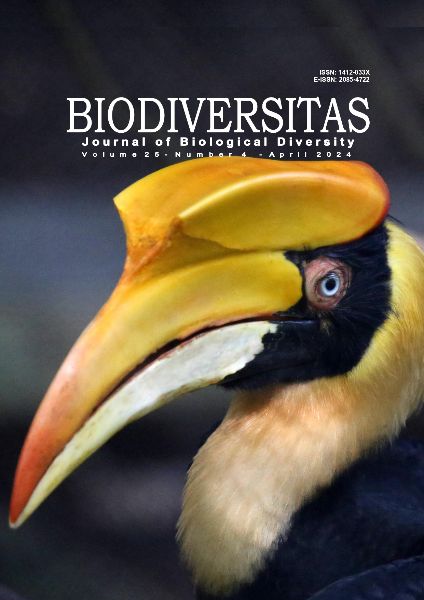Characterization of rice varieties under salinity level and the response of defense-related genes during the germination stage
##plugins.themes.bootstrap3.article.main##
Abstract
Abstract. Hartatik S, Rozzita N, Wibowo S, Choirunnisa E, Sakanti SAS, Puspito AN, Ubaidillah M. 2024. Characterization of rice varieties under salinity level and the response of defense-related genes during the germination stage. Biodiversitas 25: 1536-1543. Climate change causes sea level rise, leading to an increase in soil salinity. In the germination phase, rice plants are more sensitive to salinity stress. Under salinity stress, plants produce an increased content of Reactive Oxygen Species (ROS). Local rice (Oryza sativa) has complex gene properties to survive in salt-stress conditions. This research aims to study the potential of salt tolerance at the germination stage and provide a molecular analysis based on antioxidant genes in local rice. This study uses a factorial completely randomized design. The first factor is rice varieties (IR64, Silaun, Ime Buci, Me Klan, Me Likan, Me Meak, Me Taek, and Umak Klete), while the second factor is the salt treatments (0, 100, 200, 300, 400, 500, and 600 mM NaCl). The results showed that Ime Buci became the most tolerant variety to salinity stress due to its ability to survive and germinate at the highest NaCl concentration (400 mM NaCl). In addition, the H2O2 content and Malondialdehyde (MDA) values of the Ime Buci variety were lower compared to the IR64 variety. The expression of antioxidant genes (Mn-SOD, Cu/Zn SOD, Cytosolic APX, OsAPX1, CAT, OsCATA, and GPOD) was used as observational variables in this study. The results of antioxidant gene expression showed that the Ime Buci variety activated genes more than IR64 variety based on real-time PCR. However, it still needs more investigation to analyze the potential of Ime Buci in salt conditions during the vegetative and generative stages to get more information about rice's mechanism in terms of tolerating stress conditions.

